
|   |

|   |
 e-mail: ukb7@rediffmail.com Dancers' sojourn in distressed days February 8, 2021 Mahagami Gurukul, the unique performing arts institution of its kind, has now grown into a branch of MAHAGAMI University, having completed 20 years of a flourishing existence in 2017. Since then every year, past and present students converged from faraway places to be part of this celebration. Past students from USA, Brazil, Austria, Argentina, Delhi, Bangalore, Kochi, Pune, etc. travelled to Mahagami to be part of the dance offering, VAYAM (I, we) that aimed at celebrating their attachment with the Gurukul. In 2021, due to the long months of lockdown, the Mahagami team led by their gifted director Parwati Dutta, came up with an online version of the VAYAM festival with an aim to encouraging talented dancers and celebrating the spirit of dance even in the existing restrictions. She had been artistically active since the beginning of lockdown in mid-March 2020 and had designed, curated and initiated a variety of projects and immersions in the past 9 months. Dance immersions were aimed at re-igniting the learners' minds towards form making abilities of dance movements, creating dance motifs and metaphors, and internalising multiple facades of dance. She immersed herself in the sudden silence around in the Gurukul and came up with a range of new compositions - from a Sanskrit ditty glorifying a blossom, to re-looking at taal Rupak from the perspective of the sound-form dialogue, a pada by Nanda Das describing spring time love frolics, to a highly imaginative Krishna Tandava (pure dance in Odissi) in which the divine dance of Krishna was imagined as if he wandered in the silent pathways of Mahagami! Indeed, the sculpted gardens and decorative motifs on all the buildings of the Gurukul provided a fascinatingly varied and picturesque backdrop of the 2021 virtual programme of VAYAM.  Pratibimba VAYAM, presented online on January 17 and 18 as 'live streaming' sessions, started off on the first evening with Mangalacharan, with two young Odissi dancers performing Shiva Stuti, followed by their abhinaya around Pushpam, glorifying a flower's ethereal beauty. Pratibimba (Reflection) that followed was very beautifully composed on both stage and as a shadow play, displaying varying light and shade recorded with brilliant camera wizardry. Next was an innovative Krishna Tandava with three to four dancers romping around in Mahagami precincts and forming multiple motifs. 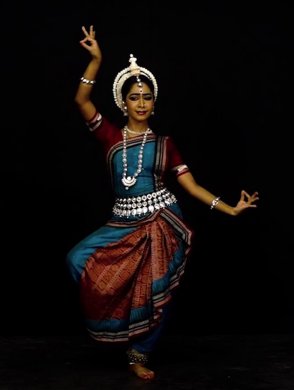 Preetisha Mohapatra In the second segment, the pretty and professionally groomed dancer, Preetisha Mohapatra from Odisha, presented virtually two vintage compositions of the legendary Guru Kelucharan Mohapatra, the first a Kalyan Pallavi with music by Mahapurush Mishra, and the second an abhinaya, Ardhanareeswara by Adi Shankaracharya, based on music by Raghunath Panigrahi. Both were riveting performances from the vintage legacy left by Kelubabu. 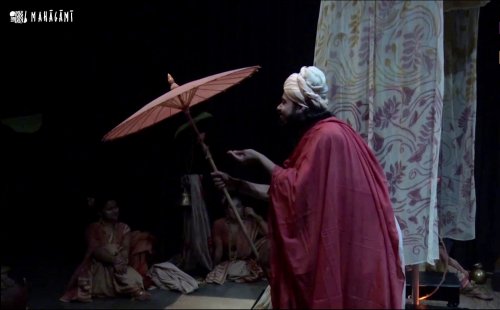 Padma Prabhritakam The third and final segment was a full fledged dance drama, Padma Prabhritakam (The Lotus Consent), based on Marga Nritya and live streamed by Chidakasha Kalalaya from Kolkata. Directed by Piyal Bhattacharya, whose re-creation of this dance form following the tenets of Bharata's Natya Shastra has attracted a lot of attention, and has been financed and documented by Sangeet Natak Akademi, was a 'Bhan', a form under Dasa Rupaka (drama styles) that permitted the wisdom of Natyacharya (director) to improvise around the essentials of the script and utilise the craftsmanship of the Nata (protagonist) according to his knowledge, skills and creativity. In this play, there was Beeta (assistant to the protagonist) and Muladeva (a complimentary character with an opposite personality and usually a musician). Supported by Dhruva Gana (ancient music), the Beeta (enacted superbly by Sayak Mitra in a multi-lingual mode) used lyrical melody and rhythm to comment on the illicit affair between the scholar Dattakalashi and the courtesan-seductress Rasabati on the Pushpa Beethika (the boulevard of flowers) in a spring season. In passing, Beeta also unearths another stolen liaison of a Buddhist monk. On the whole, Shudraka's 'Bhan' uses the Beeta's apparent contacts with the harlots to expose the dishonesty prevailing in the society, hypocrisy of the so-called saints, and the rampant debauchery among the men of upper layers! Youtube Link for Day 1 On the second evening, it was a low-key programme, relatively speaking, based entirely on Kathak, mixing Parwati's deft directorial touches again, with the disciples' own efforts in the seclusion of their 'lockdown' homes. The dances remained equally spirited, as they were on the first day. It began with two petite dancers' depiction of saint Vallabacharya's devotional lyric: Akhilam madhuram, Mathuradhipate..., followed by a senior duo's meritorious efforts with Adi Shankara's Shivashtakam in their lockdown confinements. Then came technical Kathak in Rupak, glimpses with a very colourful introduction by the choreographer Parwati and followed by a group of five talented dancers - Ishwaree, Nidhi, Shambhavi, Nikita and Chaitra. It was a beautiful teamwork. 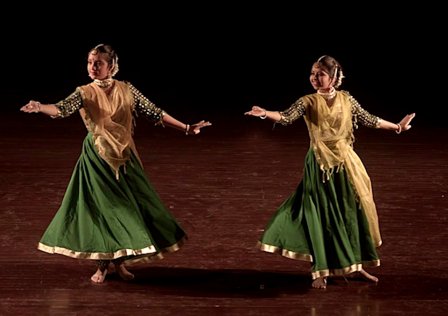 Gavati Sargam 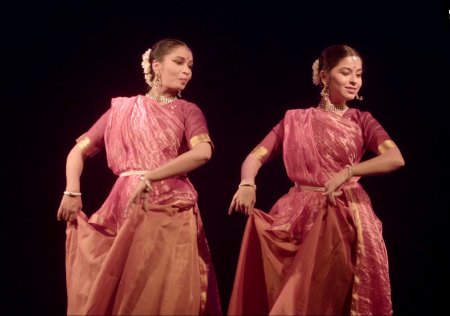 Raas Panchadhyaayi Next was a Gavati Sargam, with a chalan (movement) of Ga-Ma-Pa-Ni-Sa-Dha-Ga-Pa-Re-Sa and a lyrical exposition by the young duo again. The fifth item was a pada by Nanda Das, Raas Panchadhyaayi, a delicious recollection of Gopas and Gopis having played Raas with Krishna and danced by a twosome. The sixth item was again a rhythmic interlude, a Jhaptal Lakshana composed and recited by Pt. Birju Maharaj and an excellent exposition by two senior dancers. The seventh item was a Dhrupadangi Kathak, a special research work by Parwati, Banshidhar in raga Multani. Most of the choreographies on both days were also by Parwati, as mentioned earlier. 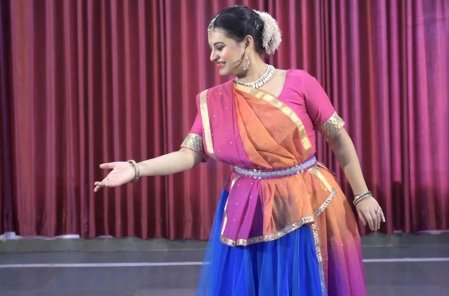 Ragini Maharaj 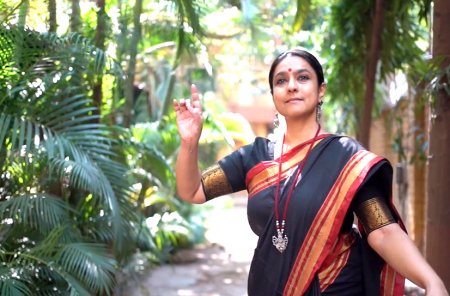 Parwati Dutta The grand finale was Kathak danced by Ragini Maharaj, grand-daughter of Pt. Birju Maharaj and groomed by his daughter Mamata Maharaj. The young Ragini first demonstrated her technical prowess in Teentaal in Upaj, Thaat, Parhant, Paryavat and Tukra. Then she transited to abhinaya in a Thumri Baaje banshi... set in raga Paraj, capturing the ambience of Vrindavan and Radha's predicament in the playful hands of Krishna. It was quite a delectable ending. Youtube Link for Day 2  Dr. Utpal K Banerjee is a scholar-commentator on performing arts over last four decades. He has authored 23 books on Indian art and culture, and 10 on Tagore studies. He served IGNCA as National Project Director, was a Tagore Research Scholar and is recipient of Padma Shri. Post your comments Pl provide your name and email id along with your comment. All appropriate comments posted with name and email id in the blog will also be featured in the site. |